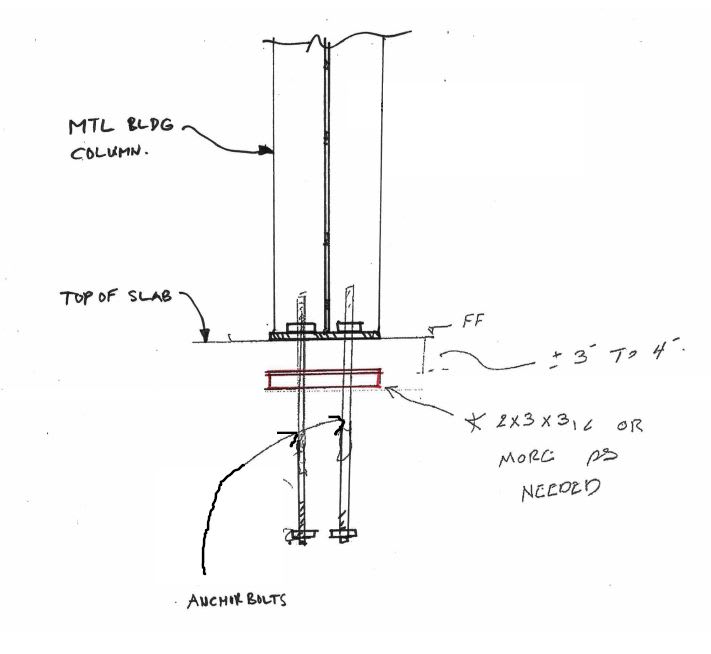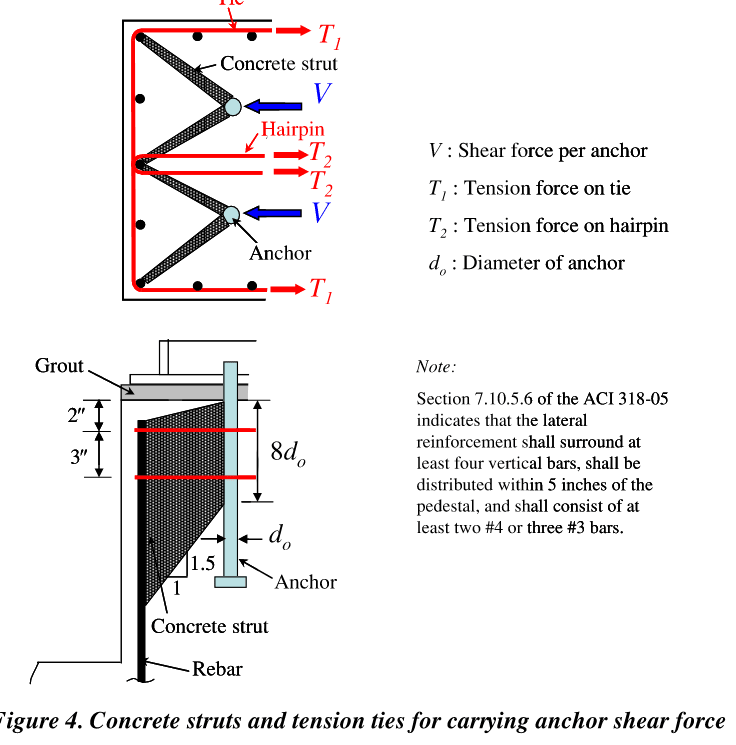McSEpllc
Structural
- Feb 25, 2006
- 108
Hi All,
In order to increase shear capacity at the connection of a per-engineered metal building column to a concrete pier, the metal building engineer suggested the attached detail. It uses a steel angle that the anchor bolts extend through within the concrete pier. I guess to engage the concrete.
Have any of you used this detail?
What do you think about it?
It seems it offsets the location of shear resistance down into the concrete, and one could argue that induces bending into the anchor bolts. On the other hand the anchor bolts are within the reinforced concrete pier, so can not deform.
Thanks!

In order to increase shear capacity at the connection of a per-engineered metal building column to a concrete pier, the metal building engineer suggested the attached detail. It uses a steel angle that the anchor bolts extend through within the concrete pier. I guess to engage the concrete.
Have any of you used this detail?
What do you think about it?
It seems it offsets the location of shear resistance down into the concrete, and one could argue that induces bending into the anchor bolts. On the other hand the anchor bolts are within the reinforced concrete pier, so can not deform.
Thanks!


